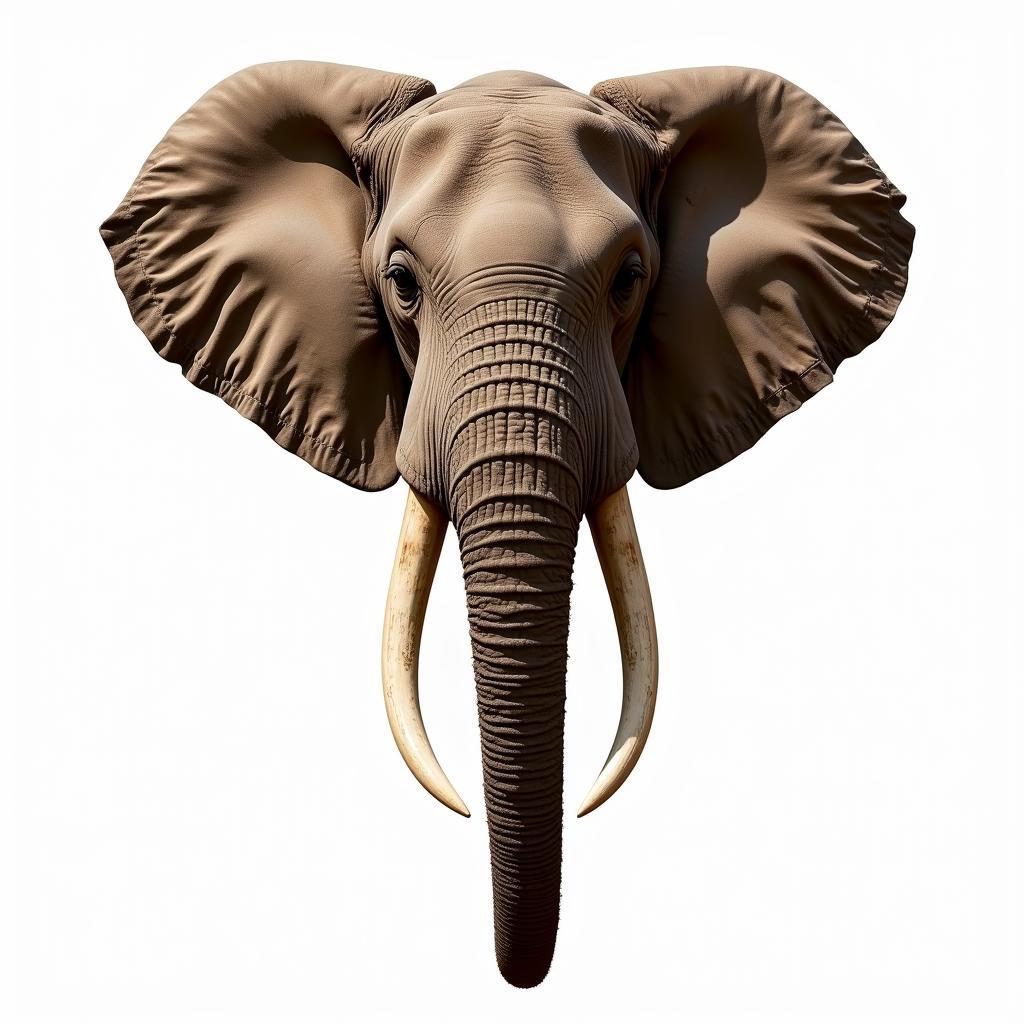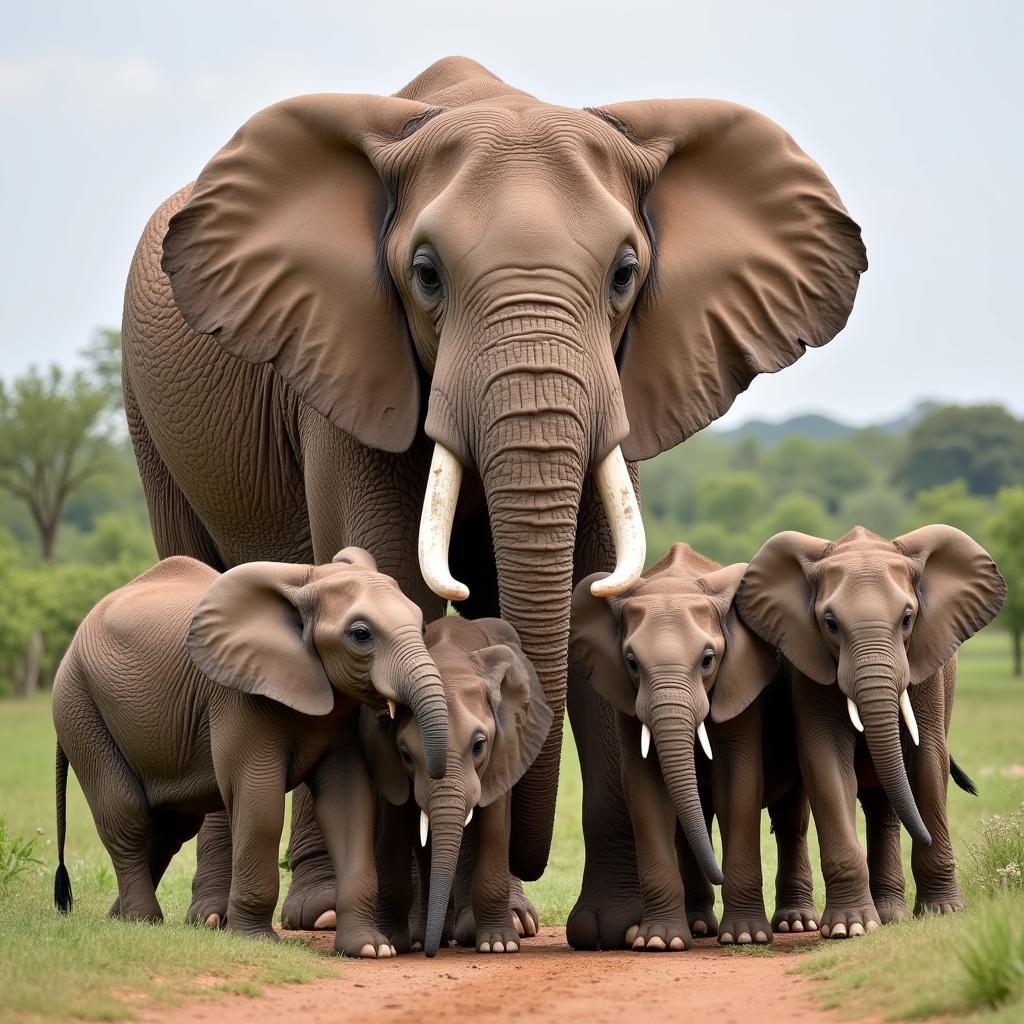African Elephant Profile: A Majestic Giant Roaming Africa
The African elephant, the largest land mammal on Earth, is an iconic symbol of the African savanna. This African Elephant Profile will delve into the fascinating world of these gentle giants, exploring their physical characteristics, social behavior, conservation status, and the crucial role they play in the African ecosystem.
One remarkable aspect of African elephants is their social structure. Led by a matriarch, these intelligent creatures form close-knit family groups, demonstrating complex communication and cooperation. You can even find unique African elephant names for each member! For a deeper dive into African food habits, check out this insightful article. african food habits
Physical Characteristics: A Closer Look at the African Elephant
African elephants possess several distinct features that set them apart. Their enormous size is the most obvious, with adult males reaching heights of up to 4 meters and weighing over 6 tons. Their large ears, which serve as efficient radiators, help regulate body temperature in the hot African sun. Their trunk, a marvel of evolution, functions as a versatile tool for breathing, smelling, drinking, communicating, and grasping objects. And of course, their ivory tusks, prized for their beauty, have sadly become a source of conflict, driving poaching and threatening their survival.
 African Elephant Physical Characteristics: Trunk, Ears, and Tusks
African Elephant Physical Characteristics: Trunk, Ears, and Tusks
Social Behavior: The Matriarchal Society of Elephants
African elephants live in complex social structures, centered around family units led by the oldest and most experienced female, the matriarch. These groups, often consisting of related females and their young, exhibit strong bonds and cooperate in raising calves, foraging for food, and defending against predators. Communication within the group is a fascinating mix of vocalizations, including rumbles, trumpets, and roars, as well as subtle body language and infrasound signals that can travel for miles.
Conservation Status: Protecting Africa’s Gentle Giants
Sadly, the African elephant faces numerous threats, primarily from habitat loss and poaching for ivory. The demand for ivory has fueled a devastating decline in elephant populations across the continent. Conservation efforts, including anti-poaching patrols, community involvement, and international collaboration, are crucial to ensuring the survival of these magnificent animals. To explore more about the intriguing world of the African brain, this resource is highly recommended. african brain
 African Elephant Family Group: Matriarch and Calves
African Elephant Family Group: Matriarch and Calves
The Elephant’s Role in the Ecosystem: Shaping the African Landscape
African elephants play a vital role in shaping the African landscape. As they forage for food, they create pathways through dense vegetation, opening up areas for other animals to access resources. Their feeding habits also influence the distribution of plant species and contribute to seed dispersal. By browsing on trees and shrubs, they prevent the encroachment of forests, maintaining the open savannas that are home to a diverse array of wildlife. Learning about their importance highlights the need for their protection. This website offers a great selection of African beers online. african beers online
Conclusion: Ensuring a Future for African Elephants
The African elephant, a magnificent creature of immense size and intelligence, faces a precarious future. Understanding their profile – from their physical characteristics and social behavior to the threats they face and their vital role in the ecosystem – is crucial to ensuring their survival. We must continue to support conservation efforts and work towards a future where these gentle giants can continue to roam the African savanna for generations to come. The African elephant profile serves as a reminder of our responsibility to protect these magnificent creatures and the biodiversity of our planet. Perhaps you’d be interested in seeing African charcoal paintings, which often feature these majestic animals. african charcoal paintings
FAQ
- What is the average lifespan of an African elephant? (Around 60-70 years in the wild).
- How much does an African elephant eat in a day? (Up to 300kg of vegetation).
- What is the biggest threat to African elephants? (Poaching and habitat loss).
- How do elephants communicate? (Through vocalizations, body language, and infrasound).
- What is the role of the matriarch in an elephant herd? (She leads the herd, makes decisions, and protects the younger members).
- How can I help protect African elephants? (Support conservation organizations, educate yourself and others, and avoid purchasing ivory products).
- Where can I see African elephants in the wild? (In various national parks and reserves across Africa).
For further assistance, please contact us at Phone: +255768904061, Email: [email protected] or visit us at Mbarali DC Mawindi, Kangaga, Tanzania. Our customer service team is available 24/7.
